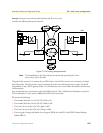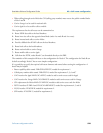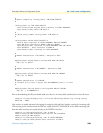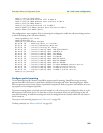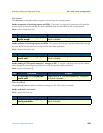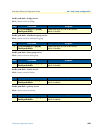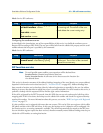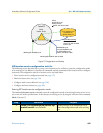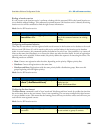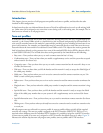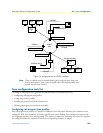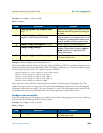
Introduction 525
SmartWare Software Configuration Guide 41 • SIP call-router services
Introduction
This chapter contains the description of all SIP specific call router services, which are only available if the soft-
ware includes the SIP component.
SIP conference-service
RFC4240 describes how to address different services on a media server without additional SIP headers or
header parameters. This mechanism makes use of the fact media servers do not manage users, they manage
media services. For that reason RFC4240 defines how to use the user part of the Request-URI as a service
indictor. The conference-service provides the functionality described in RF4240 as 'Conference Service'. It
builds the Request-URI to address a conference room instance on a media server according to this standard.
The user part of the Request URI will start with the service indicator 'conf=' followed by a unique conference
room identifier. All calls with the same conference room identifier will attend the same session. The host part
of the Request-URI that represents the media server host name has to be configured by the user. The confer-
ence room identifier and the called party number will be taken concatenated with the serial number of the
device.
This looks as follows: conf=<called-nbr><serial-nbr>@<media-server>
SIP conference-service configuration task list
The following section describes how to create a new conference-service and how to enter the configuration
mode of an existing one. In addition it describes all commands and sub commands of the conference-service
configuration mode. All configuration tasks for a conference-service are listed below.
• Enter conference-service configuration mode (see page 525)
• Configure the call routing destination (see page 525)
• Configure the conference server (see page 526)
Entering conference-service configuration mode
The service sip-conference command enters the configuration mode of an existing conference-service or cre-
ates a new one with a specified name. It also destroys an existing service by using the no form of the command.
Mode: Context CS
Configuring the call routing destination
The call routing destination specifies the next interface, table or service to which the current call has to be for-
warded. Detailed information about call routing of a call control service can be found in Chapter 40, “Call
router configuration” on page 456. Because this is a SIP specific service, the user should be aware that the final
destination of the configured call routing must be a SIP interface. This SIP interface will then set up the call to
the configured conference server. Be aware that the elements in the routing path do not modify the Request-
URI because it has been built by this service. Therefore the final SIP interface must not have configured a
remote host.
Step Command Purpose
1 [name] (ctx-cs)[switch]#[no] service sip-
conference <service-name>
Creates/Destroys a SIP conference-service or
enters the configuration mode of an existing
one.



